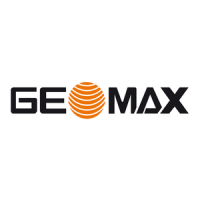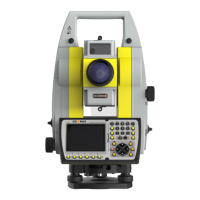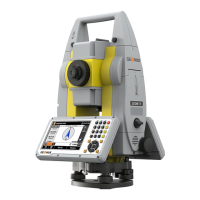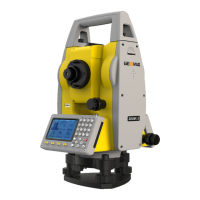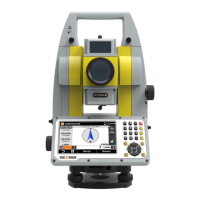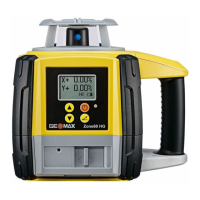Zoom90 | 38Apps
Precise Measurements To get precise measurements in the daily work, it is important:
• To check and adjust the instrument from time to time.
• To take high precision measurements during the check and adjust procedures.
• To measure targets in two faces. Some of the instrument errors are eliminated by averaging the angles
from both faces.
During the manufacturing process, the instrument errors are carefully determined and set to zero. As
mentioned above, these errors can change and it is highly recommended to redetermine them in the
following situations:
• Before the first use
• Before every high precision survey
• After rough or long transportation
• After long working periods
• After long storage periods
• If the temperature difference between current environment and the temperature at the last calibration
is more than 20°C
Summary of errors to be
adjusted electronically
6.2.2 Preparation
Before starting to work, the instrument has to become acclimatised to the ambient temperature. Approx-
imately two minutes per °C of temperature difference from storage to working environment, but at least
15 min, should be taken into account.
Even after adjustment of the AiM, the crosshairs may not be positioned exactly on the centre of the prism
after an AiM measurement has been completed. This outcome is a normal effect. To speed up the AiM
measurement, the telescope is normally not positioned exactly on the centre of the prism. These small
deviations/AiM offsets, are calculated individually for each measurement and corrected electronically. This
means that the horizontal and vertical angles are corrected twice: first by the determined AiM errors for
Hz and V, and then by the individual small deviations of the current aiming.
Instrument error Effects Hz Effects V Elimination with
two face
measurement
Automatically
corrected with
proper adjust-
ment
c - Line of sight error -
a - Tilting axis error -
l - Compensator index error -
t - Compensator index error -
i - Vertical index error -
AiM Collimation error -
Before determining the instrument errors, the instrument has to be levelled using the elec-
tronic level.
The tribrach, the tripod and the underground should be stable and secure from vibrations or
other disturbances.
The instrument should be protected from direct sunlight to avoid thermal warming.
It is also recommended to avoid strong heat shimmer and air turbulence. The best condi-
tions are early in the morning or with overcast sky.
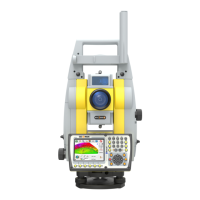
